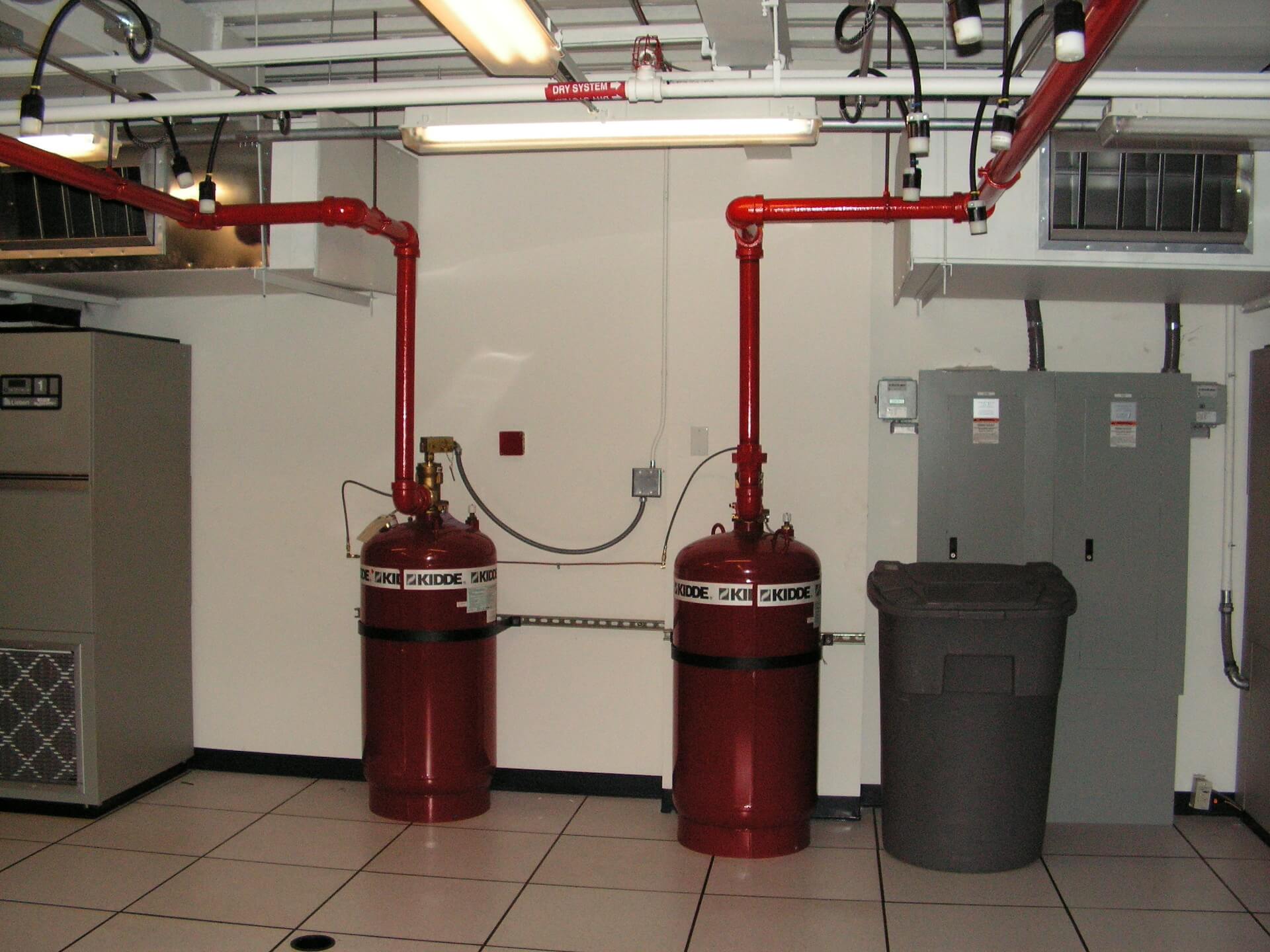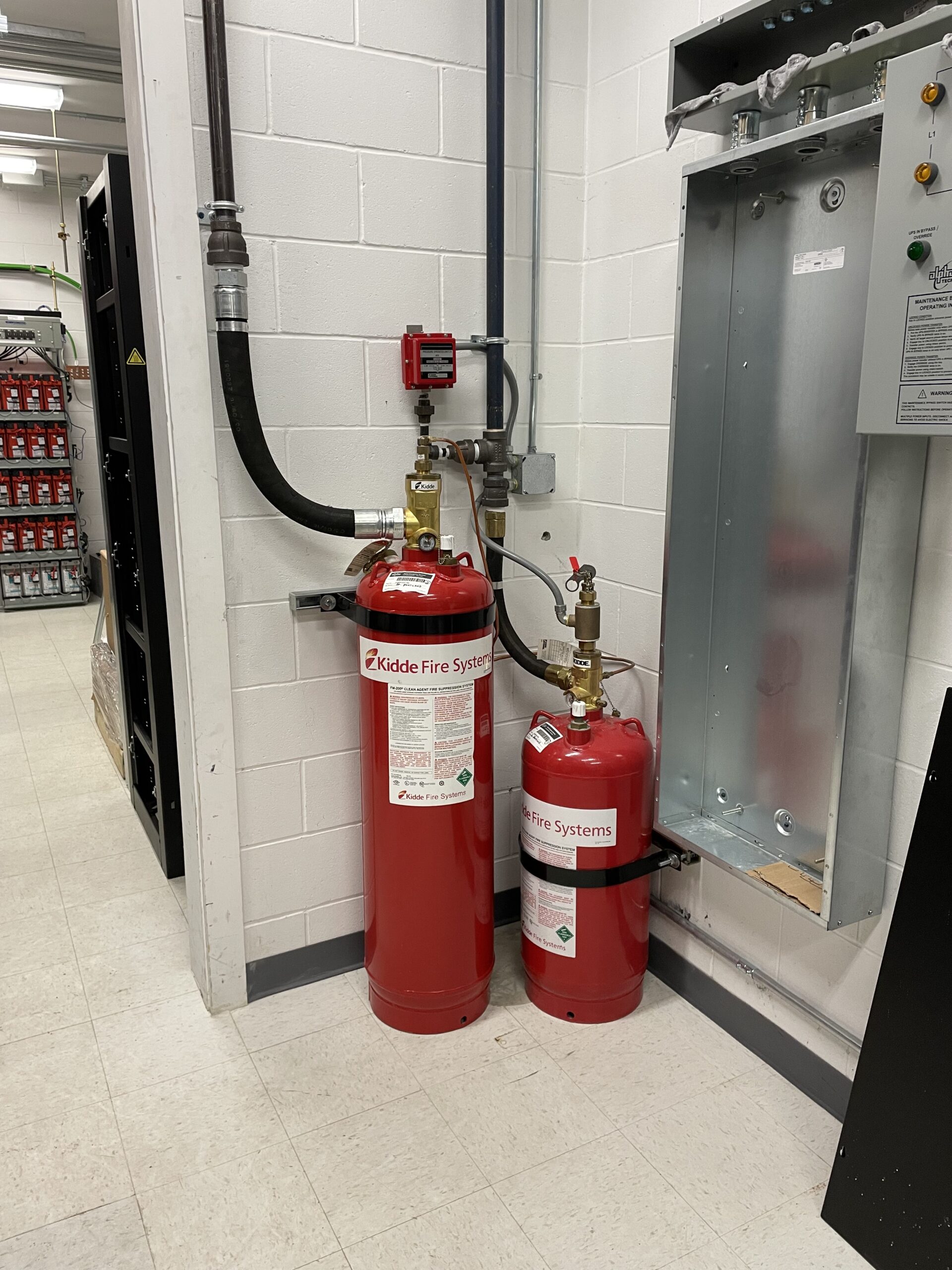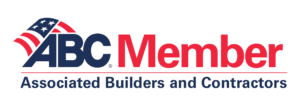Clean agent systems use a variety of non-toxic, people safe and environmentally friendly agents such as Inergen®, FM-200 and NOVEC 1230. These agents are commonly used in areas with high value assets, such as electrical data processing equipment, telecommunications equipment, paper archives, precious objects and manuscripts where other types of fire suppressants may cause corrosion or other damage to the protected items.
Interstate Fire Protection represents the major manufacturers of Clean Agent Systems. This allows us to specify a Clean Agent System for your particular needs. Among the Clean Agents we offer are:
- Carbon Dioxide, INERGEN® and Sapphire® Clean Agents by ANSUL, Inc.
- Carbon Dioxide, ECARO-25®, FM-200® and PROINERT® by FIKE Corporation,
- Carbon Dioxide, FM-200®, and Novec 1230® by KIDDE Fire Systems, Inc.
Carbon Dioxide Systems are typically deployed in areas that are normally unoccupied. There are two major groups of Clean Agent Systems used in occupied spaces: inerting agents and halocarbon agents. These two types of agent are equally effective at extinguishing fire quickly and safely.
Carbon Dioxide Systems
Clean agent systems use a variety of non-toxic, people safe and environmentally friendly agents such as Inergen®, FM-200 and NOVEC 1230. These agents are commonly used in areas with high value assets, such as electrical data processing equipment, telecommunications equipment, paper archives, precious objects and manuscripts where other types of fire suppressants may cause corrosion or other damage to the protected items.
Interstate Fire Protection represents the major manufacturers of Clean Agent Systems. This allows us to specify a Clean Agent System for your particular needs. Among the Clean Agents we offer are:
- Carbon Dioxide, INERGEN® and Sapphire® Clean Agents by ANSUL, Inc.
- Carbon Dioxide, ECARO-25®, FM-200® and PROINERT® by FIKE Corporation,
- Carbon Dioxide, FM-200®, and Novec 1230® by KIDDE Fire Systems, Inc.
Carbon Dioxide Systems are typically deployed in areas that are normally unoccupied. There are two major groups of Clean Agent Systems used in occupied spaces: inerting agents and halocarbon agents. These two types of agent are equally effective at extinguishing fire quickly and safely.
Inerting Systems
Inerting systems fight fire by lowering the oxygen content and raising the carbon dioxide content of the protected area to a point insufficient to support combustion, but sufficient to sustain human life.
Inerting agents such as INERGEN® and PROINERT® are a non-conductive/non-corrosive blend of naturally occurring gases: Nitrogen, Argon, and Carbon Dioxide (INERGEN® only). The agent is stored in cylinders that may be installed remotely or close to the space being protected. Inerting systems are extremely flexible and a single bank of agent cylinders can be used to protect multiple hazards.
INERGEN® and PROINERT® are clean, environmentally friendly, three-dimensional fire suppression agents. Both of these agents have zero ozone depletion potential, zero global warming potential, and zero atmospheric life time.
Critical facilities such as data processing rooms, telecommunications switching facilities, process control rooms, and others, requiring non-water based extinguishing agent that is electrically nonconductive.
Inerting agents are non-toxic and are designed to discharge into normally occupied spaces. Inerting agents will not harm sensitive electronic equipment. They are completely safe for personnel occupying the protected space.
Since inerting agents contain naturally occurring gases, they are not subject to any pending environmental legislation that would limit their production or use.
Halocarbon Systems
Halocarbon agents have effectively replaced Halon 1301. This group of agents has achieved excellent fire extinguishing capabilities as well as low impact on the environment.. Halocarbon agents are effective on Class A, B and C fires. They extinguish fire by physically cooling the fire and interrupting the chemical chain reaction of combustions.
Designed to discharge in 10 seconds or less, these agents act quickly to extinguish fire and limit damage to your valuable assets.
The cost effective agents we offer are: ECARO-25®, FM-200®, and NOVEC 1230® (marketed as SAPPHIRE by ANSUL, Inc.)



